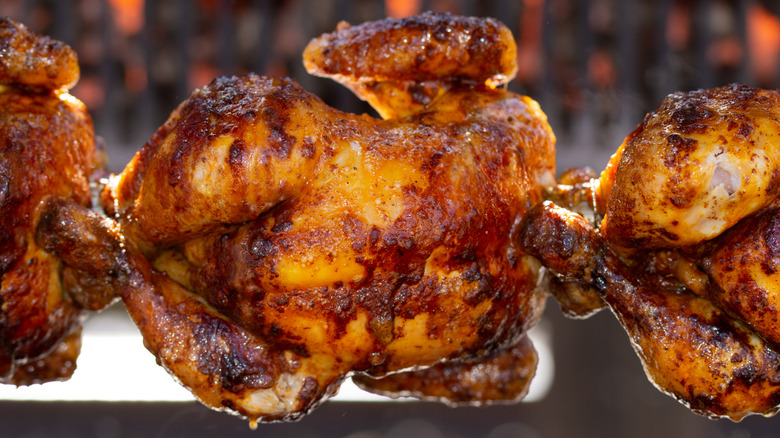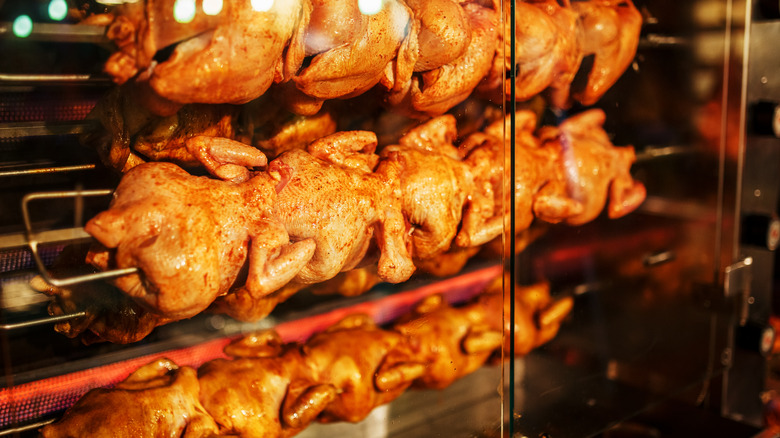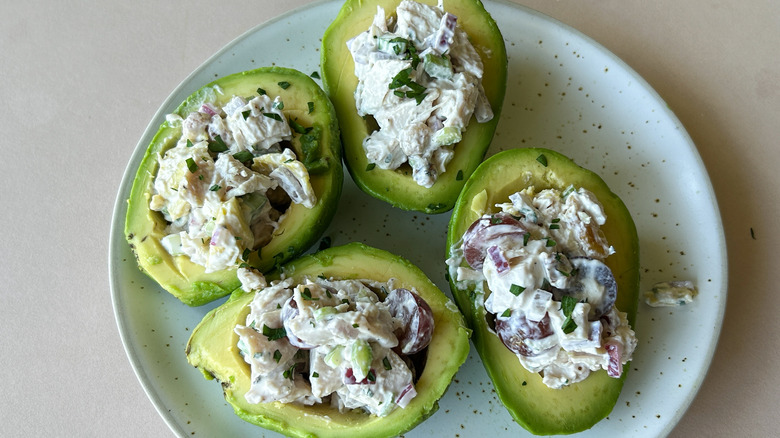What To Look For When Choosing A Grocery Store Rotisserie Chicken
If you're at a loss for what to make for dinner, rotisserie chicken is always there, shining under the warming light at the grocery store like a beacon of hope. The texture of the crispy skin and juicy poultry are a winning combo. Even more so, it's versatile, economical, delicious, and makes meal prep so quick. Plus, you can always reheat an entire rotisserie chicken right before you serve it, which is a win of convenience at any time. But, in a sea of bagged chickens, how do you pick the best one, each time? Fortunately, it's simple: Rely on your senses.
Even though most rotisserie chickens weigh the same starting out for more uniform cooking from bird to bird, there are important factors that affect the quality. It's best to aim for a juicy bird that looks and smells good, feels heavy, and is hot to the touch. The chicken should be intact, not falling off the bone or slippery to touch through the bag. Lastly, it's vital to read the label to make sure you're getting the freshest specimen possible.
Picking a good chicken
When a bird feels lighter, it is possible the juices have cooked out, causing the skin to look wrinkled or loose. This can also be an indication of meat that is dry or has been sitting too long.
Pay close attention to the time the store documented the cooking start time and the sell-by time — obviously, choosing the freshest bird is ideal. Ask the deli staff any questions you may have to ensure you're getting the best. They may recommend an ideal time or a better day of the week to visit the store for the freshest product.
If you want to keep your menu options open, avoid buying a seasoned bird — you limit yourself to only certain dishes, plus extra sauces and spices may include even more sodium. Beyond having culinary choices with a plain bird, it can help you determine if the bird is still good. Added seasonings (like lemon or barbecue) may be masking the smell of older meat.
Tips for storing and eating your chicken
Rotisserie chicken can be used for multiple meals as it will last up to four days in your fridge (via the USDA). Chop up the entire chicken if you'd like to help your future self with meal prep. Whatever meat and chicken parts you're not using immediately, store in an air-tight container in the fridge. Once you take all the meat off the bone, you can use it to make your own bone broth or freeze the carcass in a plastic freezer bag to use at a later date.
You can prep some frozen vegetable sides to go along with the simplicity of carved pieces of meat, saving even more time. If you have avocados that need to be eaten now, you can make chicken salad stuffed avocados. Chicken and rice is a classic and easy meal on its own or when added to quesadillas. Toward the end of its fridge life, you can use whatever poultry remains to start your day with a solid breakfast of shredded chicken hash. The quick and easy meals are endless when you have a delicious, juicy rotisserie chicken.



